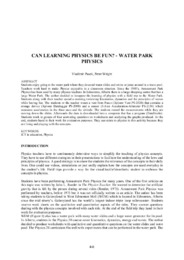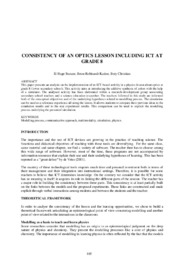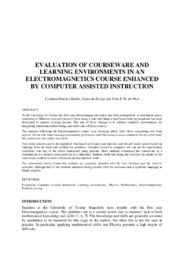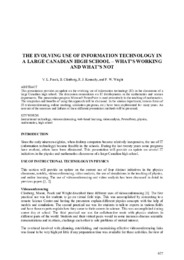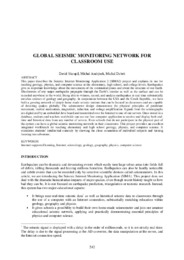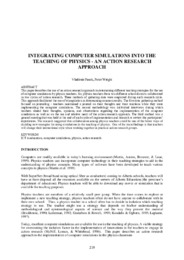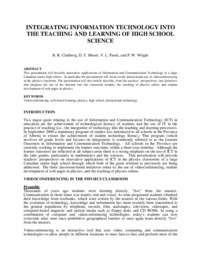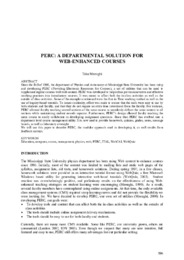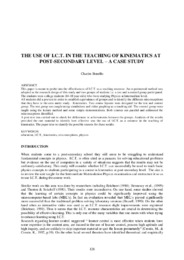Browsing by Subject "Physics"
Now showing items 1-10 of 10
-
Can learning physics be fun? - Water park Physics
(University of Cyprus, 2007)Students enjoy going to the water park where they descend water slides and swim or jump around in a wave pool. Teachers work hard to make Physics enjoyable in a classroom situation. Since the 1980’s, Amusement Park Physics ... -
Consistency of an optics lesson including ICT at grade 8
(University of Cyprus, 2010)This paper presents an analysis on the implementation of an ICT-based activity in a physics lesson about optics at grade 8 (lower secondary school). This activity aims at introducing the additive synthesis of colors with ... -
Epistemic perspective on a conceptual evolution in physics at the secondary level
(Department of Educational Sciences, University of Cyprus, 2003)The research deals with qualitative understanding of physics notions at the secondary level. It attempts to identify and to label, in the verbalizations of 12 to 16 year-old students, the tendencies that guide their cognitive ... -
Evaluation of courseware and learning environments in an electromagnetics course enhanced by computer assisted instruction
(Pedagogical Faculty of University of Ostrava, 2001)At the University of Twente the first year electromagnetism course has been restructured. A web-based course consisting of different exercises (most of them using a link with Maple) and PowerPoint presentations has ... -
The evolving use of information technology in a large canadian high school – what’s working and what’s not
(Department of Educational Sciences, University of Cyprus, 2003)This presentation provides an update on the evolving use of information technology (IT) in the classrooms of a large Canadian high school. The discussion concentrates on IT developments in the mathematics and science ... -
Global seismic monitoring network for classroom use
(University of Zilina, 2005)This paper describes the Seismic Internet Monitoring Application 2 (SIMA2) project and explains its use for teaching geology, physics, and computer science at the elementary, high school, and college levels. Earthquakes ... -
Integrating computer simulations into the teaching of physics - an action research approach
(University of Zilina, 2005)This paper describes the use of an action research approach in determining different teaching strategies for the use of computer simulations by physics teachers. Six physics teachers from two different school districts ... -
Integrating information technology into the teaching and learning of high school science
(Pedagogical Faculty of University of Ostrava, 2001)This presentation will describe innovative applications of Information and Communication Technology in a large Canadian senior high school. In particular the presentation will focus on the instructional use of videoconferencing in ... -
Perc: a departmental solution for web-enhanced courses
(Department of Educational Sciences, University of Cyprus, 2003)Since the Fall of 1998, the department of Physics and Astronomy at Mississippi State University has been using and developing PERC (Providing Electronic Resources for Courses), a set of utilities that can be used to ... -
The use of I.C.T. in the teaching of kinematics at post-secondary level – a case study
(Department of Educational Sciences, University of Cyprus, 2003)This paper is meant to probe into the effectiveness of I.C.T. as a teaching resource. An experimental method was adopted as the research design of this study and two groups of students i.e. a test and a control group ...
